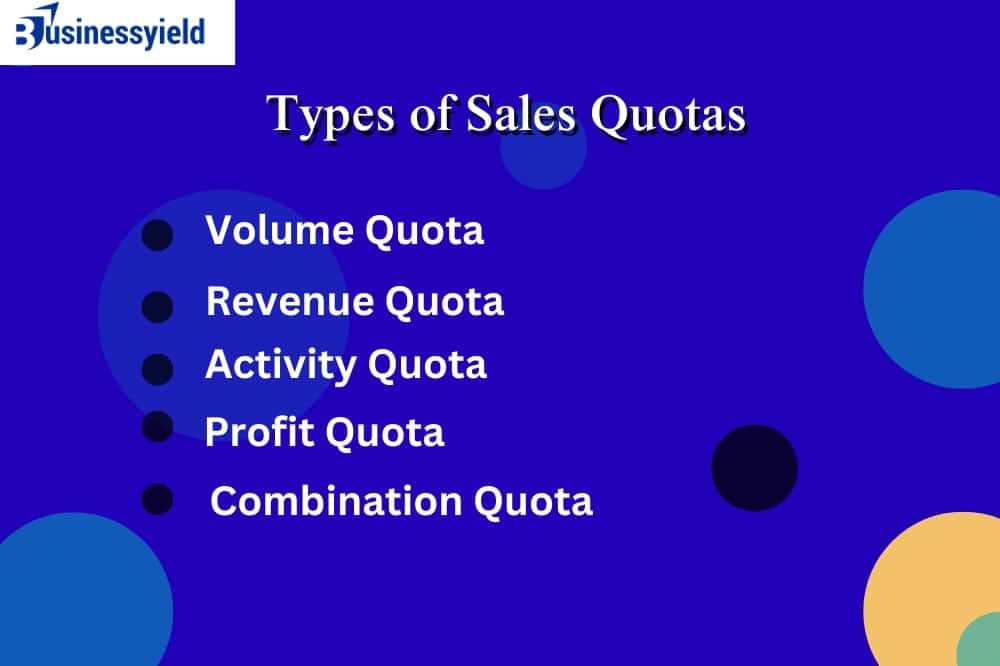What starts your car? The spark plug for the engine, right? Sales quotas act as the spark plug for your company’s sales engine. It’s a strategic benchmark, a roadmap to achieving success for both you and the company. But let’s be honest, staring down a sales quota can feel daunting. Here’s the good news: with the right approach, that quota can become your springboard to exceeding expectations and crushing your goals.
At its core, a sales quota represents a pre-determined target set for individuals or teams to achieve within a specified timeframe. It serves as a benchmark against which performance is evaluated and on which it’s rewards are often based. Whether it’s a monthly, quarterly, or annual goal, meeting or surpassing the sales quota is a testament to one’s proficiency in the art of selling.
I’ll break down everything you need to know about sales quotas. I’ll show you the difference between sales goals, sales targets, and sales quotas. You’ll also learn about the different types of sales quotas, and most importantly, the advantages and disadvantages of sales quotas. So, buckle up, get ready to dive deep, and discover how to turn that quota into your badge of honor.
Key Points:
- Sales quotas are like the spark plug for a company’s sales engine, providing a strategic benchmark and roadmap for success.
- These quotas represent predetermined targets set for individuals or teams within a specified timeframe, serving as a measure of performance and often determining rewards.
- Understanding the different types of sales quotas—volume, revenue, activity, profit, and combination—allows sales professionals to tailor their strategies and focus areas accordingly.
- Sales quotas play a crucial role in motivating sales teams, driving accountability, and aligning efforts with the company’s overall objectives.
- While setting a good sales quota percentage depends on various factors such as industry, company goals, and individual capabilities, aiming for around 80% attainment is generally considered a benchmark for success.
What is A Sales Quota?
Do you ever feel that pressure to hit a certain number in your market sales? In sales, that number is your sales quota – it’s your personal Mount Everest to climb each month, quarter, or year. But what exactly is a sales quota, and why does it exist?
A sales quota is a monthly or quarterly performance target that salespeople must meet to receive an incentive bonus. It can be based on a variety of measures, but it often focuses on total revenue produced, several transactions closed or won, sales activities performed, or a mix of these metrics. They are always established by sales leaders/executives and are based on the company’s objectives.
Hitting your sales quota isn’t just about ticking a box. It’s a win-win. You close more deals, feel the satisfaction of achievement, and might even snag some sweet bonuses. The company thrives as it reaches its overall sales goals, and everyone celebrates. It’s a beautiful thing when everyone’s aligned and working towards that winning feeling.
Types of Sales Quotas

There’s more to it than just a random number! Sales quotas come in different flavors, each with its own focus. Here’s the breakdown of the most common types:
#1. Volume Quota
“Sales organizations that use incentives with sales volume quotas can motivate salespeople to sell earlier in the business cycle for newer companies, thus improving efficiency.”
By Chris Murphy, of Murphy Consulting Company
Volume-based quotas require sales representatives to set goals based on the number of units sold or total revenue generated within a given period. They’re motivated to sell as many units as possible.
#2. Revenue Quota
In the revenue quota model, the quota is satisfied when the salesperson reaches a certain quarterly revenue target. It is not determined by the number of transactions or the duration of sales cycles; rather, it is analogous to a book of business.
The revenue quota works well for product-type enterprises with a consistent sales cycle and stable product prices. However, it stops salespeople from proposing a better price or a reduction during the closing process. This may result in missed chances. This quota works particularly well for service and subscription businesses (for example, ins+urance, SAAS, and OTT platforms), where the client relationship is long-term and the monthly/yearly pay-out contributes to the salesperson’s Monthly Recurring Revenue (MRR) or Annual Recurring Revenue (ARR).
This strategy also encourages salespeople to take advantage of all available upsell and cross-sell opportunities, resulting in larger deals. So, salespeople strike a balance between discounts, upselling, and the number of deals to achieve this quota, increasing profitability for your company.
Example:
A salesman with a $20,000 MRR closes two deals at $5,000 and $4,500. This takes his total to $29,500 ($20,000 plus $5,000 and $4,500). If this salesperson’s MRR quota was $25,000, these two deals helped him exceed it, and he will collect the commission.
#3. Activity Quota
Activity quotas don’t care about the final sale, just the groundwork you lay. Imagine it as planting seeds – gotta hit a target number of calls made, emails sent, or meetings booked. It’s all about building a pipeline ripe with potential customers, ready to blossom into sales wins! This quota keeps you laser-focused on filling your sales funnel, ensuring a steady stream of opportunities.
Example,
A salesman may send 200 emails and make 500 phone calls each month. To satisfy their activity quota, they also update lead data in the CRM, follow up with contacts, and reach out to 50 individuals on social media each month.
#4. Profit Quota
This is where things get real! Here, it’s not just about selling anything and everything. You’re on a mission to maximize profit for the company. Think of it as a high-stakes treasure hunt – gotta find those high-margin items that bring in the big bucks! This quota challenges you to be strategic, focusing on selling the products that pack the biggest financial punch. It’s all about turning those sales into serious green!
Example:
For a deal worth $10,000, where the cost of goods is $4,000 and the overall selling expense is $2,000, the gross profit will be $4,000 ($10,000 – ($4,000+$2,000)). A salesperson must make five such deals to reach his monthly quota of $20,000.
#5. Combination Quota
The combination quota throws everything at you – volume, revenue, activity, and maybe even a sprinkle of profit! It’s designed to make you a well-rounded sales machine. Imagine juggling flaming chainsaws while blindfolded and riding a unicycle – that’s the intensity (and maybe a touch of exaggeration) of this quota! But fear not, with the right strategy, you can conquer it all. This quota pushes you to be a master of the sales game, excelling in every aspect – stacking units, filling the piggy bank, and keeping the sales pipeline overflowing. It’s a true test of your skills, but the rewards for exceeding a combination quota are legendary!
Example:
A salesperson’s monthly quota requires them to make 200 calls, close five deals, and generate $5000 in profits as a part of their combination quota.
READ ALSO: WHAT IS KPI: Detailed Explanation and Examples
Is sales quota a KPI?
YES, your sales quota is ur KPI. Sales quotas are like the North Star for salespeople, and they guide our efforts and tell us where we need to be. But here’s the thing, quotas are just one piece of the puzzle, they’re a specific type of KPI, which stands for Key Performance Indicator. Now, KPIs are like a team of advisors, giving us a broader picture of how we’re performing.
Sales quotas translate the company’s big-picture goals into a personal challenge for you. They become the yardstick to measure your sales performance. Did you hit your quota? Awesome, that means you’re contributing directly to the company’s success! But quotas aren’t the only story. They work alongside other KPIs, like the number of deals closed or your average deal size. These additional KPIs give you a more well-rounded picture of your sales effectiveness.
So, while the sales quota is a crucial KPI, it’s just one piece of the puzzle. By tracking multiple KPIs, you gain a deeper understanding of your strengths and weaknesses, allowing you to refine your approach and become a sales superstar!
What Are The Difference Between Sales goals, Sales Targets, and Sales Quotas
Someone new to sales may mistake quotas for sales objectives and goals. These words may seem similar, but they are distinct. But here’s the breakdown to keep them straight in your head:
Sales goals are the big picture. Imagine them as the company’s ambitious vision for growth. Maybe it’s expanding into a new market or skyrocketing customer satisfaction. These goals are long-term and set the overall direction for the sales team.
Sales targets are like stepping stones. They take those big goals and break them down into smaller, more achievable chunks. Targets might be specific to a region, product line, or even department. They help you see the progress towards that larger goal.
Sales quotas are the nitty-gritty numbers. They translate those targets into your challenge – the amount you, as an individual salesperson, need to sell within a set timeframe. Quotas are your personal Everest to conquer!
Business Yield Tactical Business Plan Template
READ ALSO: Sales Coaching: Detailed Guide to Sales Coaching for Your Sales Team
How Do You Get Sales Quotas?
The quota is decided by the number of units a salesperson can sell within the specified period. it’s a collaborative effort! It all starts with the company’s big-picture goals, like crushing revenue or dominating a new market. We (the sales team) get involved next. We brainstorm, crunch historical data, and estimate what’s achievable. This back-and-forth with sales leadership helps set realistic targets for different regions or products.
Now, the magic happens! Those targets get translated into individual quotas for each salesperson. Your sales manager considers your past performance, your territory’s potential, and of course, your rockstar sales skills to create a personalized quota that challenges you to grow, but remains conquerable. So, that quota? It’s a mix of company ambition, team strategy, and a healthy dose of belief in your awesomeness!
Why Fix The Sales Quota?
This is because Sales managers create targets based on historical data and sales forecasts to ensure that the company’s earnings and revenue continue to increase. Salespeople are compensated with commissions and bonuses if they meet their quota within the time frame given. The entire growth of the firm affects sales targets.
What Are The Advantages and Disadvantages of Sales Quota?
The truth is, they’re a double-edged sword. On the plus side, quotas keep me laser-focused. Here are the following some of the advantages of sales quotas:
Advantages of Sales Quota
- sales quotas allow management to forecast overall revenues in the next years. This helps to adapt the manufacturing schedule to match demand.
- Sales quotas enable the sales organization to evaluate the performance of each salesperson, making monitoring easier.
- It is simpler to identify weak and undeveloped markets. Special efforts might be made in certain areas to develop them.
- A sales quota generates interest in work and serves as a tool to motivate the sales staff to sell more. Sales quotas are also beneficial for organizing sales contests. Sales performance versus quotas serves as the foundation for compensating salespeople.
- Sales quotas also motivate salespeople to work for the organization uniquely. Salespeople are likely to work hard to meet their sales targets.
- The efforts of motivated salespeople to meet sales quotas will be abundantly reflected in the market. Such an attempt will earn kudos from wholesalers while keeping competitors at bay.
Disadvantages of Sales Quota
Here are the following some of the disadvantages of sales quotas.
- Extending credit to unfit consumers: When sales quotas are set, the salesperson may provide irresponsible credit to undesirable customers to meet the quota. This may result in the buildup of bad debts.
READ ALSO: On-TARGET EARNINGS, Simplified!!! Meaning, Calculator,& How to Negotiate OTE
What is A Good Sales Quota Percentage?
Ugh, sales quotas – that number that can feel both motivating and intimidating at the same time. The truth is, it’s not a one-size-fits-all answer. It depends on a bunch of factors, kind of like that perfect recipe. At least, 80% is considered a good quota attainment rate.
Tougher quotas might push veterans to new heights, while overly ambitious ones could discourage newbies. Then there’s the industry, Selling fireworks. A seasonal rush might mean quotas fluctuate wildly, Selling software? It might be a steadier climb.
Company goals matter. Aggressive targets will likely lead to higher quotas. So, there’s no magic quota percentage. But by understanding these factors, we can work with our sales manager to set a quota that’s challenging yet achievable. After all, a good quota is like that spicy dish – pushes you, but leaves you wanting more!
Conclusion
Mastering the art of managing sales quotas is critical for success in today’s competitive sales environment. Sales personnel may advance their careers and promote organizational success by knowing sales targets and developing effective tactics to meet and surpass them.
Remember, a sales quota isn’t just a number looming over your head. It’s a roadmap to success, a way to measure your progress and push yourself to achieve amazing things. By understanding your quota type and employing the right strategies, you can transform it from a hurdle into a springboard.
Now, get out there and crush those quotas! With dedication, focus, and the knowledge you’ve gained, you’ll be exceeding expectations and celebrating victories in no time. Remember, every win on a sales quota brings you closer to achieving your personal goals, and that’s a success worth celebrating!
SALES PERFORMANCE MANAGEMENT: Definition, Strategies & Software
BUSINESS METRIC: Meaning, Examples, Dashboard, Reporting
Key Performance Indicators KPIs: 145+Examples of KPIs






